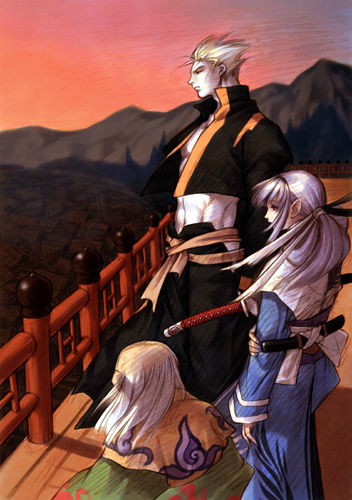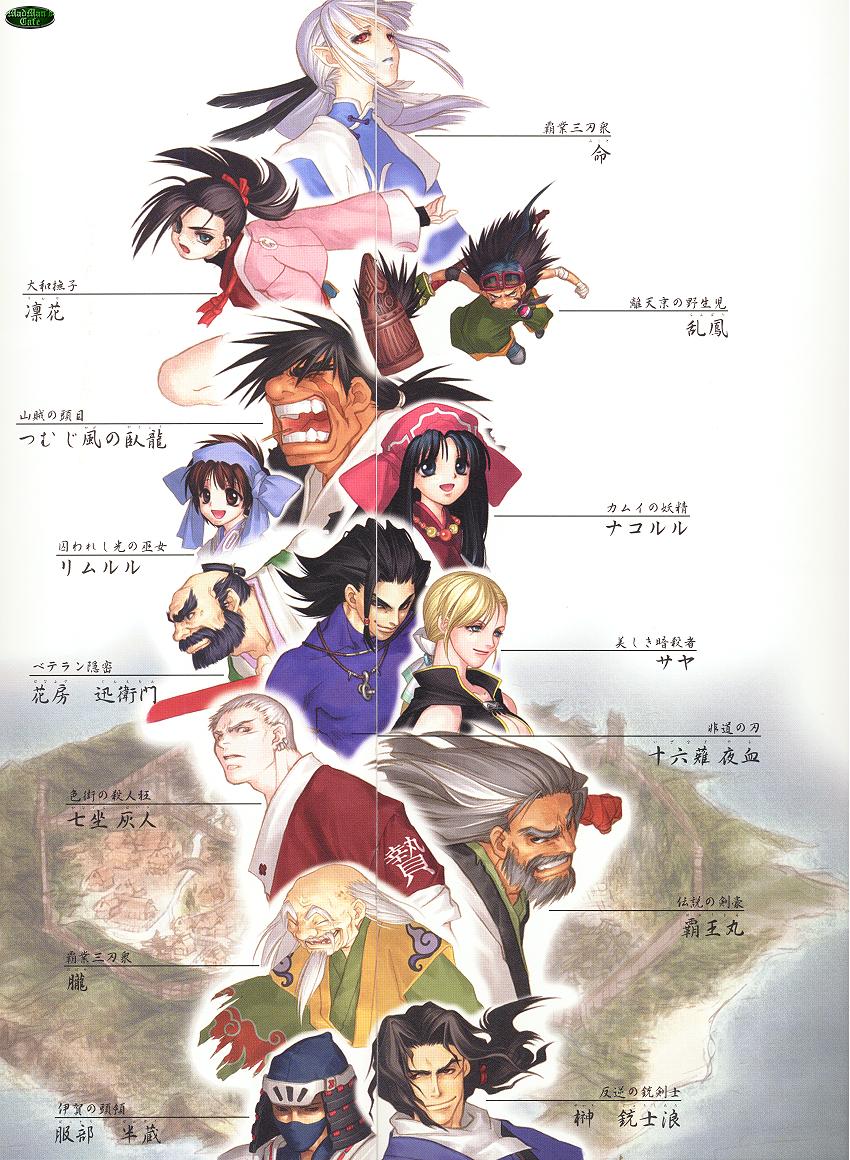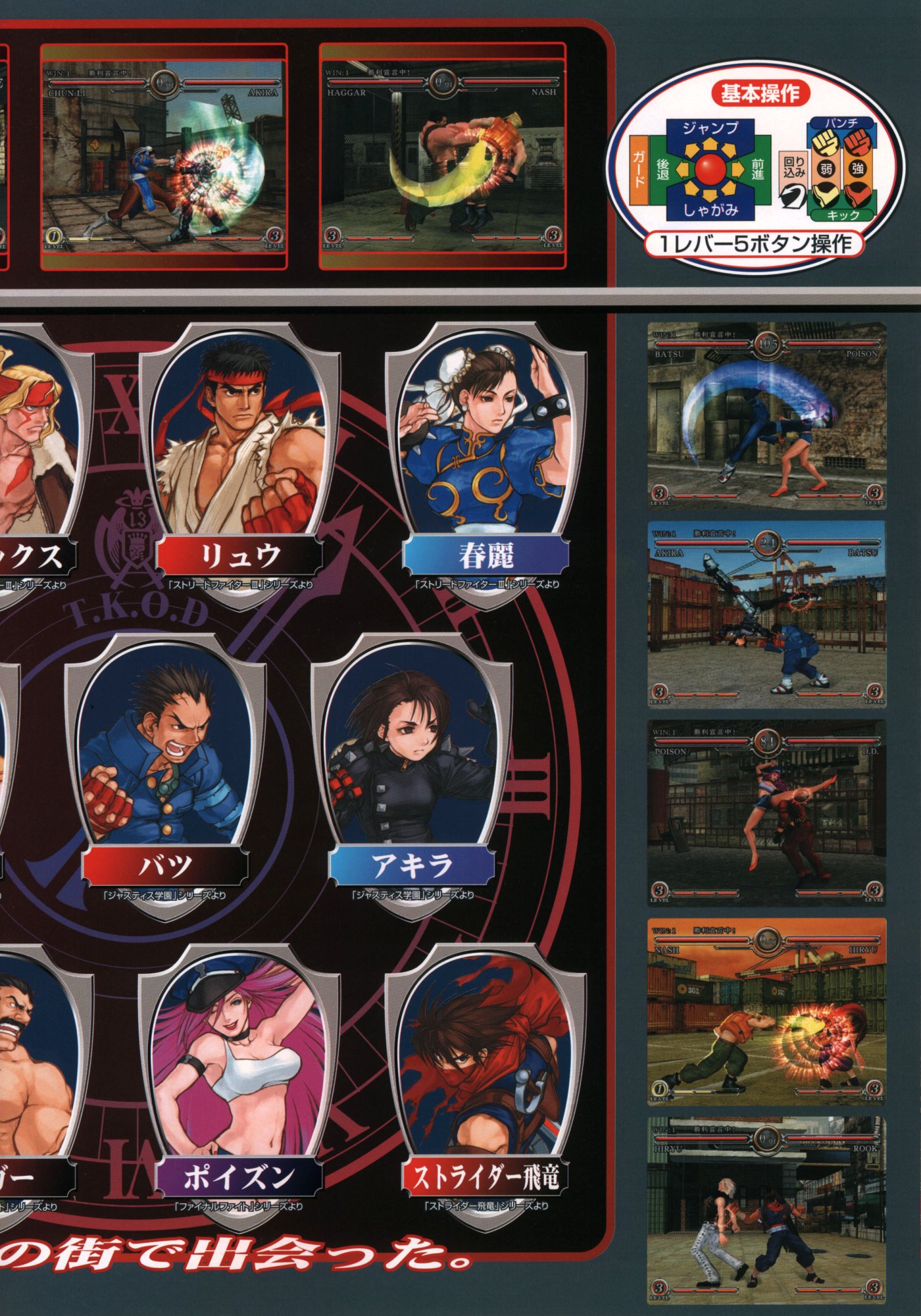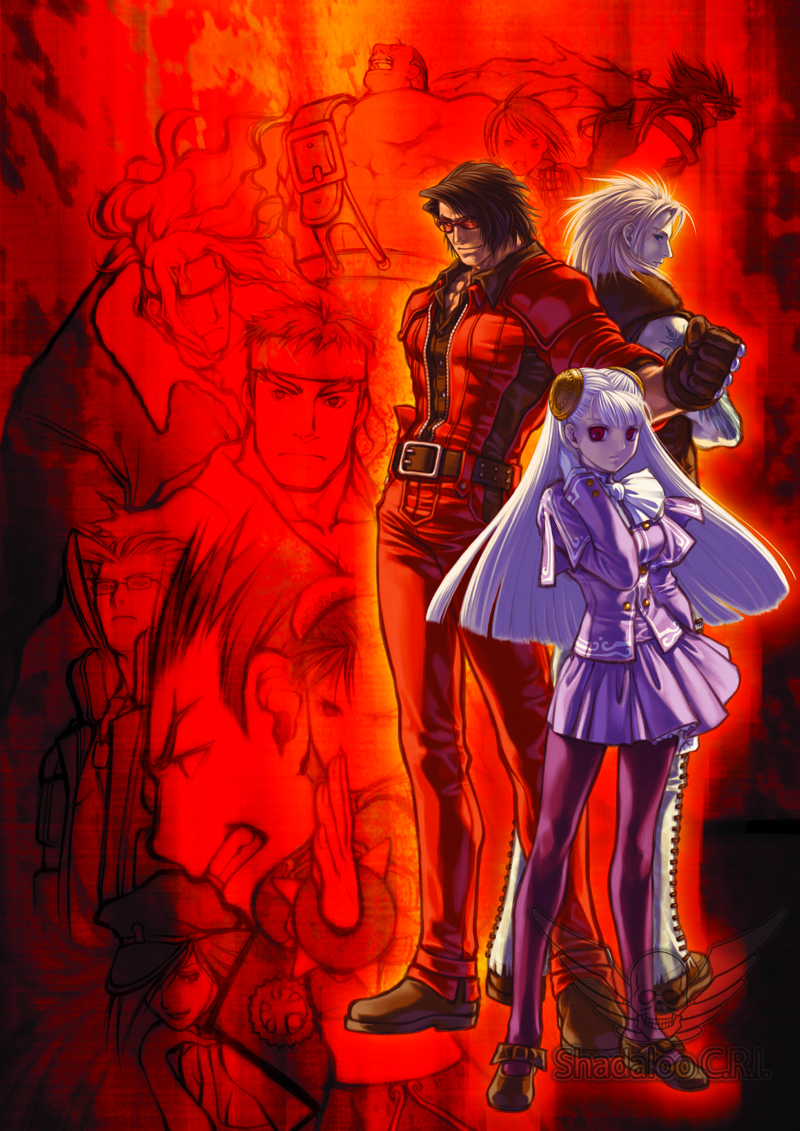The Dunkey video hits on one of the things that bothered me about XC2 the more I learned of its premise, which is that I really really just find the "magical women who are also weapons/spirits of objects and are bonded to serve the male protagonist" trope to be sketch as hell
The game is super super anime beyond your tolerance, and I wouldn't necessarily recommend you play it (Especially not you, Eden. I know JRPGs are pretty much the fundamental opposite of your jam and that's 100% cool), but I did want to address this because the discomfort you feel at that trope is explicitly and I'd go so far as to say inarguably the core of the game's philosophical backing. Basically, know that the issues that the game has are as a result of some of the hands involved in it's desire to have a cake that the crux of the game was built on eating, not because they play the trope straight.It's the most transparent male power fantasy self insertion possible and that's saying something when you consider that this is the gaming industry.
I'm going to write at length about it now because I wanted to decompress this stuff in shorter form somewhere anyway. I'll discuss several of the game's character arcs and central themes in detail, spoiling mid-game reveals and talking about stuff that doesn't ruin the narrative but isn't shown on the surface of what the game presents itself as. This is going to go a little nuclear, because I'm going to brush on character arc aspects up through the final moments of the game, though I'll avoid discussing the title's biggest NARRATIVE twists.
Disclaimer that Takahashi hasn't written at length about his intentions, so I'm obviously invoking death of the author here. I'd cite the thematic similarities with previous works that he HAS talked at more length about as basis for my claims. This game was still directed and written by him, and it shows heavily.
The core of Xenoblade 2 as a character work is a bildungsroman through the lens of exploration of unhealthy relationship dynamics of many different flavors, including Rex's and Pyra's, and how unequal partnerships and denial of a partner's agency for any reason can lead to incredibly dangerous and toxic outcomes. The crux of its philosophical argument is the assertion that one of the most important elements of being a responsible adult is recognizing and respecting the agency and opinions of your partner.
This is something that many of the human characters struggle with, most of all Rex himself, for the vast majority of the game's length. He's entirely fixated on protecting Pyra, an immortal demigod unbound by the normal life cycles of either blade OR human, who spends most of her time protecting HIM. He sees her as an object to defend in order to gratify his childish impulse to be heroic.
Pyra and her subservient, passive nature are born of psychological dissociation of an old, tired, traumatized demigoddess who found herself sick of being used as a weapon of mass destruction, for good or ill, bound to the will of a human master. She finds herself endeared to Rex's naivety, both in her passive dissociated state, and in her fugue-bound true nature, watching on from the subconscious. She tries to shepherd him and play his damsel as best she can, while shielding him from the worst parts of the world he lives in and her own connection to that darkness.
But the way that Rex acts the white knight, while pure and endearing, comes back to bite him several times. He learns several hard lessons about himself and the world and, as the situation worsens and she stretches herself to the limit trying to protect his endearing naivety from reality, she finally reaches her breaking point.
"I walked in the shadow of the Aegis's light. Blindly walking my own path, while she walked alone."
He finds himself, after a brief collapse, ascending from child playing at a champion to an actual champion before learning on the eve of the ending that his chivalry, though now fully realized, is still a childish notion that inherently disrespects her agency. It's only in the final moments of the game that one of the adult party members with a healthy partnership finally breaks through and teaches him a very important lesson about adulthood. He finds himself becoming the actual, true, equal partner she deserves for the first time only moments before the credits roll, completing his character arc.
"Chum... How long are you planning on being a baby...? She's the girl you love. You gotta accept her decision. That's what being an adult means."
Blades, which can manifest as anything from male or female to completely abstract, monstrous creatures, are functionally immortal demigods, completely impervious to all forms of physical harm, and capable of massive, terrifying feats of destruction. This is mitigated by the fact that their very nature renders them entirely subservient to humans.
They have the consciousness and cognitive abilities of a human--many have the appearance of a human, too, but they are born full formed, with full knowledge of who and what they are and how the world works but nothing else. They exist tangibly only when bound to a human through their interaction with a core crystal. When that human, their driver, dies, the blade returns to the crystal and loses their memories entirely. Next they're awoken, it is in subservience to a new master, as a new person, with no knowledge of their past deeds.
This is something that eats at blades massively throughout the game. They know and recognize that the entire nature of their existence renders them both impossibly more powerful than humans, and eternally their slaves--always at the mercy of the nature and mortality of their driver should they not wish to die a philosophical death. A blade CAN kill their master, but it's tantamount to suicide. You can probably imagine where both the main narrative and sidequests take this concept yourself, so I doubt I need to detail it.
Blades often develop incredibly close relationships with their partners, their very makeup is functionally engineered to ensure this happens and it's far easier to give in and accept it than rail against the reality of their situation. One of the most toxic ways that this bond manifests is with the Flesh Eater. Flesh Eaters are blades who consume their master's heart, taking their organic material into their composition. This has incredibly volatile, violent effects on the Blade's physiological makeup, and also results in the obvious death of their master. When a blade eats a human they, in part, become that person. They take in elements of that person's self and carry it with them. They become mortals, immune to the normal life cycle of blades. They no longer return to their core, they simply die one day--some within hours of their consumption of their driver, some many hundreds of years later. They also gamble on either becoming unprecedentedly powerful or living an existence of constant, excruciating pain with no further benefits.
Most importantly, a Flesh Eater stops losing their memories. As you might expect, many Flesh Eaters are born of shared desperation of blade and driver who have become immensely close. Several of the Flesh Eaters in the game, including one of the central antagonists, are born of this type of dynamic.
Imagine, for a moment, a loved one's final wish being that you take drastic measures necessary to continue living--to not forget them--dooming you to an unwanted life of several hundred years, continuing onward only because it was her final wish that you do so.
Only someone who was in a position of power in an unequal partnership, never truly considering their loved one, would wish this of someone they genuinely cared for if they were thinking clearly. No one in an equal partnership would ACCEPT that burden, honoring a final wish to such extreme detriment of one's self can only occur when one reveres one's partner more than one loves them.
"Sometimes words can become a curse."
This is reality for several of the game's blades. In their reverence of a their masters, they accept a burden that no living being is psychologically ready for--one of living for several centuries on end, constantly subject to the worst elements of humanity.
Both Pyra and the Antagonists share this curse through different means. She addresses it by dissociating. They address it by trying to fix the problem that is humanity by wiping it out. Neither is healthy, and neither is portrayed as being such.
The game has no villains. It has only broken people, a child playing at heroism, and several adults trying to shepherd and mentor him. Because that's an adult's job.
This is something that many of the human characters struggle with, most of all Rex himself, for the vast majority of the game's length. He's entirely fixated on protecting Pyra, an immortal demigod unbound by the normal life cycles of either blade OR human, who spends most of her time protecting HIM. He sees her as an object to defend in order to gratify his childish impulse to be heroic.
Pyra and her subservient, passive nature are born of psychological dissociation of an old, tired, traumatized demigoddess who found herself sick of being used as a weapon of mass destruction, for good or ill, bound to the will of a human master. She finds herself endeared to Rex's naivety, both in her passive dissociated state, and in her fugue-bound true nature, watching on from the subconscious. She tries to shepherd him and play his damsel as best she can, while shielding him from the worst parts of the world he lives in and her own connection to that darkness.
But the way that Rex acts the white knight, while pure and endearing, comes back to bite him several times. He learns several hard lessons about himself and the world and, as the situation worsens and she stretches herself to the limit trying to protect his endearing naivety from reality, she finally reaches her breaking point.
"I walked in the shadow of the Aegis's light. Blindly walking my own path, while she walked alone."
He finds himself, after a brief collapse, ascending from child playing at a champion to an actual champion before learning on the eve of the ending that his chivalry, though now fully realized, is still a childish notion that inherently disrespects her agency. It's only in the final moments of the game that one of the adult party members with a healthy partnership finally breaks through and teaches him a very important lesson about adulthood. He finds himself becoming the actual, true, equal partner she deserves for the first time only moments before the credits roll, completing his character arc.
"Chum... How long are you planning on being a baby...? She's the girl you love. You gotta accept her decision. That's what being an adult means."
Blades, which can manifest as anything from male or female to completely abstract, monstrous creatures, are functionally immortal demigods, completely impervious to all forms of physical harm, and capable of massive, terrifying feats of destruction. This is mitigated by the fact that their very nature renders them entirely subservient to humans.
They have the consciousness and cognitive abilities of a human--many have the appearance of a human, too, but they are born full formed, with full knowledge of who and what they are and how the world works but nothing else. They exist tangibly only when bound to a human through their interaction with a core crystal. When that human, their driver, dies, the blade returns to the crystal and loses their memories entirely. Next they're awoken, it is in subservience to a new master, as a new person, with no knowledge of their past deeds.
This is something that eats at blades massively throughout the game. They know and recognize that the entire nature of their existence renders them both impossibly more powerful than humans, and eternally their slaves--always at the mercy of the nature and mortality of their driver should they not wish to die a philosophical death. A blade CAN kill their master, but it's tantamount to suicide. You can probably imagine where both the main narrative and sidequests take this concept yourself, so I doubt I need to detail it.
Blades often develop incredibly close relationships with their partners, their very makeup is functionally engineered to ensure this happens and it's far easier to give in and accept it than rail against the reality of their situation. One of the most toxic ways that this bond manifests is with the Flesh Eater. Flesh Eaters are blades who consume their master's heart, taking their organic material into their composition. This has incredibly volatile, violent effects on the Blade's physiological makeup, and also results in the obvious death of their master. When a blade eats a human they, in part, become that person. They take in elements of that person's self and carry it with them. They become mortals, immune to the normal life cycle of blades. They no longer return to their core, they simply die one day--some within hours of their consumption of their driver, some many hundreds of years later. They also gamble on either becoming unprecedentedly powerful or living an existence of constant, excruciating pain with no further benefits.
Most importantly, a Flesh Eater stops losing their memories. As you might expect, many Flesh Eaters are born of shared desperation of blade and driver who have become immensely close. Several of the Flesh Eaters in the game, including one of the central antagonists, are born of this type of dynamic.
Imagine, for a moment, a loved one's final wish being that you take drastic measures necessary to continue living--to not forget them--dooming you to an unwanted life of several hundred years, continuing onward only because it was her final wish that you do so.
Only someone who was in a position of power in an unequal partnership, never truly considering their loved one, would wish this of someone they genuinely cared for if they were thinking clearly. No one in an equal partnership would ACCEPT that burden, honoring a final wish to such extreme detriment of one's self can only occur when one reveres one's partner more than one loves them.
"Sometimes words can become a curse."
This is reality for several of the game's blades. In their reverence of a their masters, they accept a burden that no living being is psychologically ready for--one of living for several centuries on end, constantly subject to the worst elements of humanity.
Both Pyra and the Antagonists share this curse through different means. She addresses it by dissociating. They address it by trying to fix the problem that is humanity by wiping it out. Neither is healthy, and neither is portrayed as being such.
The game has no villains. It has only broken people, a child playing at heroism, and several adults trying to shepherd and mentor him. Because that's an adult's job.
EDIT: Also several juvenile jokes about boobies.
Last edited:







